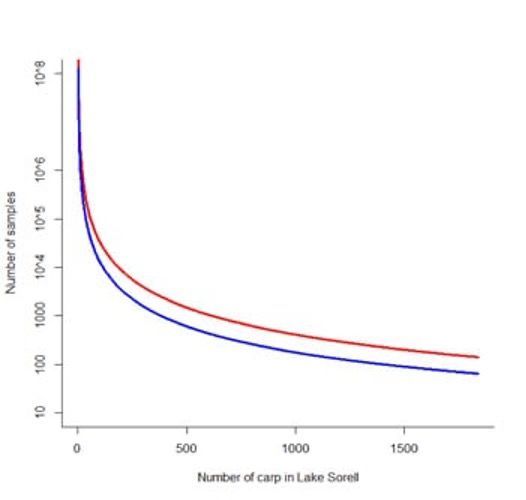Low density detection of invasive fish
Because of its sensitivity, eDNA can be a complementary tool for confirming species eradication success. eDNA surveys were conducted in Lake Sorell, Tasmania (IFS 2016), where an extremely low-density population of European carp, Cyprinus carpio, is present.
The results were used to determine the survey effort required to confidently detect carp at their current density as well as the increased survey effort required to detect carp when their population drops to just several or a single individual.
eDNA detection in Lake Sorell. Number of samples required to achieve 95% detection probability for a given number of carp (assuming the current population size is 1140 or 1840 carp, red and blue lines respectively).

Further reading
For more information on this case study, visit besjournals.onlinelibrary.wiley.com/doi/pdf/10.1111/1365-2664.13485
View our other case studies
Our team has engaged in a wide variety of research projects involving many unique species from Australia and beyond as well as diverse ecosystems. See other case studies of how our research has been applied and the difference it has made for our stakeholders.
EcoDNA acknowledges the Ngunnawal people, traditional custodians of the lands where we are situated. We wish to acknowledge and respect their continuing culture and the contribution they make to the life of Canberra and the region. We also acknowledge all other First Nations Peoples on whose lands we gather.
Email: ecoDNA@canberra.edu.au
Address: Building 7, Level D, University of Canberra, Bruce ACT 2617 Australia

Accreditation number: 21138
Accredited site number: 25428
